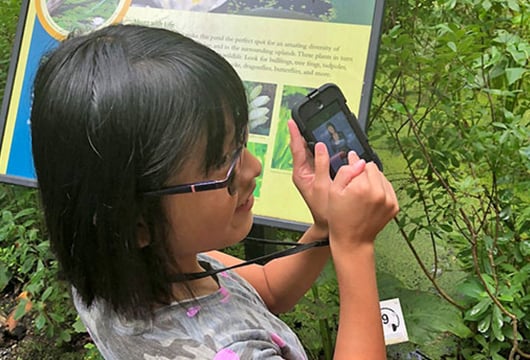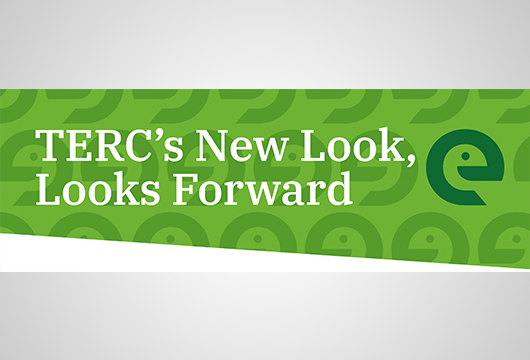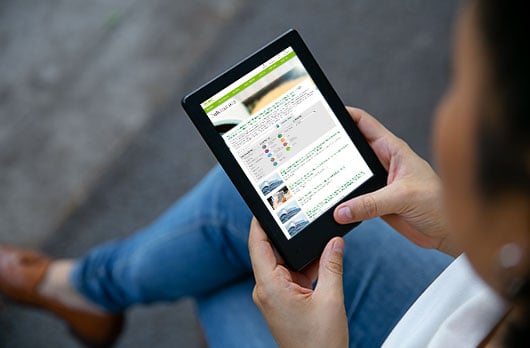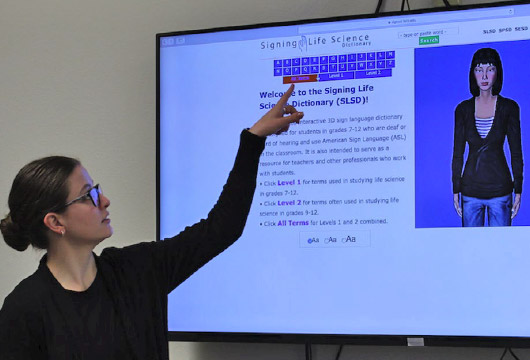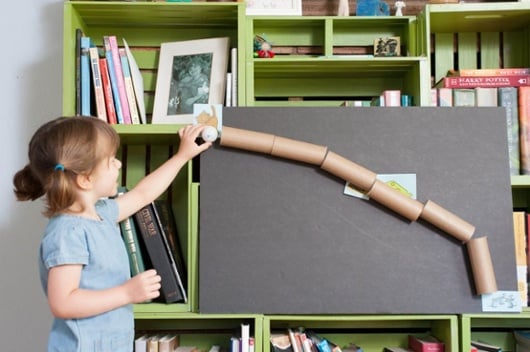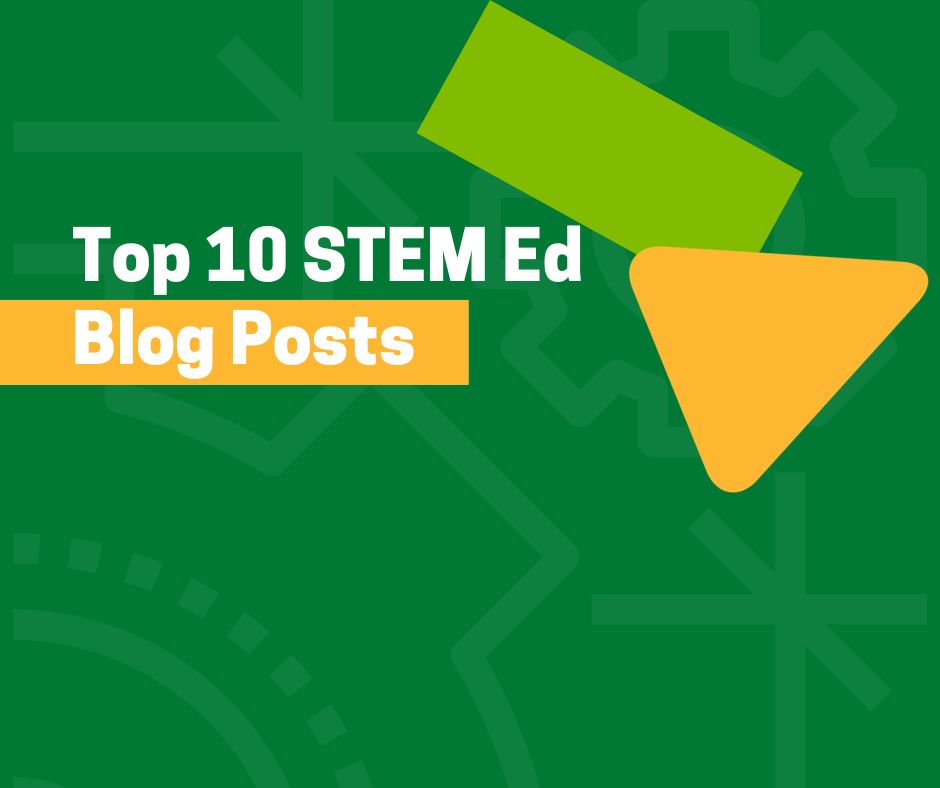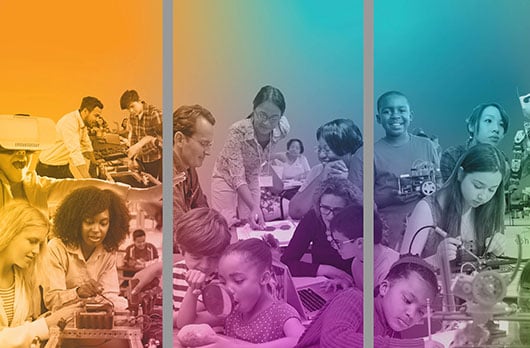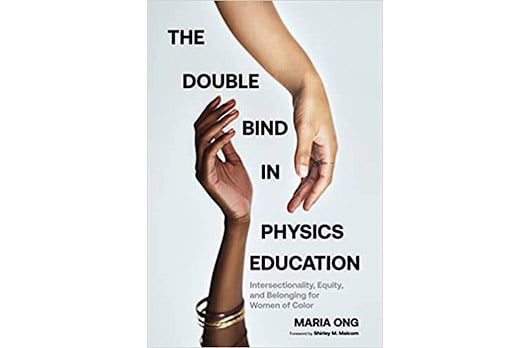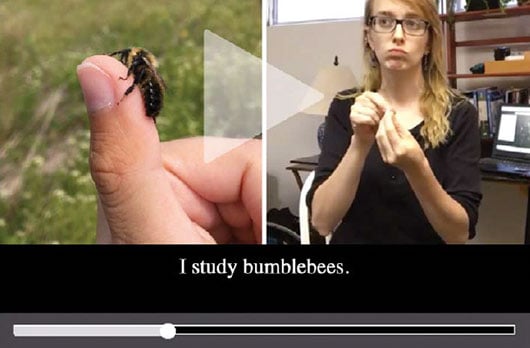TERC Blog
Glossary Apps for Signing Science Exhibits
Why Are Signing Glossaries Needed?
In the US, approximately 105,000 children under five years old, and another 333,416 children ages five to seventeen, report having difficulty hearing, which affects communication, cognition, and educational development (U.S. Census Bureau 2014). As these children mature and progress through school, their literacy levels lag behind those of their hearing peers. This results in considerable literacy limitations that lead to the majority of deaf students leaving high school with a reading level at the fifth grade or below. In fact, the English vocabulary of the average 15-year-old deaf child is about the size of that of the average 9-year-old hearing child and will not improve significantly (Karchmer & Mitchell 2006; Qi & Mitchell 2012).
This lack of literacy is seen as part of an "academic puzzle" that is connected with early exposure to language in the home having a substantial influence on language development. One part of this puzzle is that approximately 90% of deaf and hard of hearing children have hearing parents, few of whom know ASL (Mitchell & Karchmer 2004). Another part of the puzzle is that most of these parents never develop strong signing skills, so that their children are isolated from information that hearing children of hearing parents and deaf children of deaf parents receive. An end result is that the use of informal science education venues is a low priority for persons who are deaf or hard of hearing and whose first language is ASL. The main reason for this is twofold: Most exhibits and activities at these venues rely on captions and labels that presuppose the ability to understand written English, so they are out of reach for many members of this audience. Also, ASL interpretation is not always an answer—it usually has to be arranged in advance or is only offered on certain days.
To help bridge the literacy gap that contributes to grade K-12 students who are deaf or hard of hearing missing many chances to learn STEM content, TERC and Vcom3D (developers of SigningAvatar® assistive technology) developed a series of grade-level and content-specific standards-based science and math sign language dictionaries for use in classrooms. An unexpected outcome of this line of research and development was that the dictionaries were being used in out-of-school settings by parents at home and during visits to zoos and nature centers. A subsequent research study focused on use of the dictionaries to access exhibit content at the Museum of Science in Boston. A key finding was that integrating the signing dictionaries, which were specifically designed for use with the core classroom curriculum, into informal programs is less than ideal, as this requires going from one dictionary to another and is timeconsuming for visitors. It is also frustrating not knowing which dictionary to use to find a particular term. Visitors want a single tool that allows them to access terms with one click. The signing glossaries are a response to this.
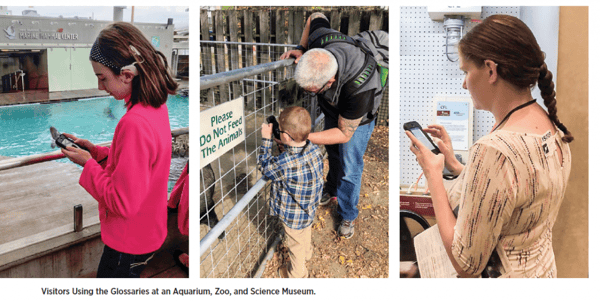
How Are the Glossaries Designed?
The glossaries incorporate interactive features that are consistent with the three principles of Universal Design for Learning [UDL] (Rose & Meyer 2006). These are:
-
Visitors can acquire information in different ways.
-
Visitors are provided opportunities for demonstrating what they know.
-
Visitors are offered opportunities that make sense and are interesting.
Addressing Principles 1 and 3—Visitors can use icons to: access terms via an alphabet list, a category list, or a search box; listen to spoken English text; view signing of English text-based terms; access illustrations; view previously visited terms; change the text size. Addressing Principles 2 and 3—Visitors can: work individually or in groups; look up terms of interest to them; share ideas; make comparisons between glossary information and what they see or experience. Incorporating these interactive UDL principles into the visitors' experiences offers the target audience a glossary that avoids a "one size fits all" approach, thereby meeting the varied needs of individual visitors and families and giving options for personalized use.
What Does Our Research Show?
Visitors used the glossaries at the type of venue for which each was designed. Results supplied answers to two primary research questions:
-
How do visitor groups that include members who are deaf or hard of hearing integrate and use handheld signing glossaries during visits?
-
What kinds of learning outcomes are made possible with use of the glossaries?
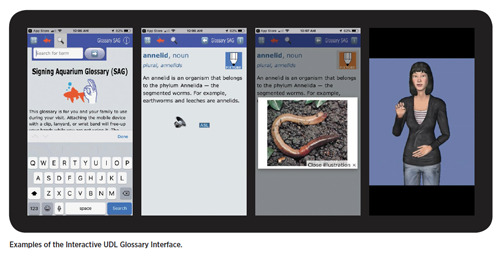
With regard to Question 2, we organized our results around impact categories from the Framework for Evaluating Impacts of Informal Science Education Projects (Allen et al. 2008). For the first category—Awareness, Knowledge, or Understanding— children at multiple venues used the glossary to help them observe animals and plants, looking up names and structures as they went.
For example, one child who visited a nature center with her parents told the researcher that she looked up the term bear and learned what bears eat. A child who visited an aquarium told the researcher that she looked up the term penguin and learned that they live where it is cold and that they can swim. For the second Framework category—Engagement—all the parents told the researcher that their children were more engaged in looking at the exhibits than had been the case during past visits to similar venues. The parents attributed this to their children being able to use the glossary to look up information about what they were seeing. For the third Framework category—Skills—children and parents alike told the researcher that they had learned new signs from using the glossary.method for accessing terms was used—the search box, the category lists, and the alphabet list. Children in the family groups at each of the venues used the glossaries to look up signs for what they were observing or doing. Visitors in all the groups agreed that the glossaries were easy to use and that they were fun and helpful. For example, family groups who visited the zoo and the aquarium engaged in discussions about animal structures and behaviors. Parents in these groups found that using the glossaries enabled their children to engage in the exhibits more independently than they expected, and that the children spent more time at each exhibit than they would have without the motivation and support supplied by the glossaries.
One visitor summarized in her own words what our research shows when she wrote: "We were most impressed at the versatility of the signing glossaries in navigating various types of museums. [Our daughter] loves visiting these locations, but we often avoided them because we were unsure what value they'd have without the rich explanations we were able to give to our boys, who are both hearing. The glossaries enriched not only her experience but ours as well, helping us to feel more connected to her during those visits. Sometimes as a hearing parent of a child who is deaf, you can feel inadequate or ill equipped to provide your child the best educational support—especially in the areas of science and math. We are grateful to the work of TERC and the ASL apps. Our experiences have all been positive, regardless of the type of museum we are visiting."
WHERE ARE DOWNLOADS AVAILABLE? Apps for the Signing Zoo Glossary (SZG), Signing Nature Center Glossary (SNCG), Signing Science Museum Glossary (SSMG), Signing Natural History Museum Glossary (SNHMG), Signing Aquarium Glossary (SAG), and Signing Botanical Garden Glossary (SBGG) are available free through Apple's App Store and from the Google Play Store. They can be used with iPhones, iPads, and iPods.
AUTHORS
Judy Vesel is a Principal Investigator at TERC. She has degrees in Biology, Linguistics, and Education. She was the Principal Investigator for the Leveraging Learning and Science for Today and Tomorrow projects (funded by NSF). She is the Principal Investigator for a body of work referred to as "Signing Math & Science"– funded by NSF and the U.S. Department of Education. Her experience as an educator and administrator extends from the primary grades through high school. She also leads another body of work that involves development of a stand-alone device that uses LED light technology and incorporates Web-based materials to offer blind and students who are visually impaired opportunities to learn core-based mathematics and English Language Arts content or skills included in the Expanded Core Curriculum. Ms. Vesel has presented her work at many recent conferences including annual meetings of the Center for Advancement of Informal Science Education (CAISE), American Association of Museums (AAM), Assistive Technology Industry Association (ATIA), and Closing the Gap. E-mail: judy_vesel@terc.edu
Tara Robillard is a senior research associate at TERC. She has degrees in Marine Science and Science Education and taught at the high school level. Her research interests focus on accessibility for students with low-incidence disabilities, especially the use of universally designed technology innovations to improve achievement in mathematics and science of students who are deaf or hard of hearing. E-mail: tara_robillard@terc.edu
REFERENCES
Allen, S., Campbell, P. B., Dierking, L. D., Flagg, B. N., Friedman, A. J., Garibay, C., & Ucko, D. A. (2008). Framework for evaluating impacts of informal science education projects. In Report from a National Science Foundation Workshop. The National Science Foundation, Division of Research on Learning in Formal and Informal Settings.
Karchmer, M., and Mitchell, R. E. (2006). Demographic and achievement characteristics of deaf and hard-of-hearing students. In M. Marschark and P.E. Spencer (Eds.), Oxford Handbook of Deaf Studies, Language and Education (pp. 21-37). New York, NY: Oxford University Press.
Mitchell, R. E., & Karchmer, M. A. (2004). Chasing the mythical ten percent: Parental hearing status of deaf and hard of hearing students in the United States. Sign Language Studies, 4(2), 138–163.
Rose, D., & Meyer, A. (2006). A practical reader in universal design for learning. Cambridge, MA: Harvard Education Press.
Qi, S., & Mitchell, R. (2012). Large-scale academic achievement testing of deaf and hard-of-hearing students: Past, present, and future. Journal of Deaf Studies and Deaf Education, 17(1): 1-18.
U.S. Census Bureau. (2014). American community survey, tables B18101–B18107.
CREDITS
© Text, pictures, and interface design © TERC, Inc. All rights reserved. The Glossaries are being developed by TERC and funded in part by the National Science Foundation, Grant # 1602284. All opinions, findings, conclusions, and recommendations expressed herein are those of the authors and do not necessarily reflect the views of the funders.

